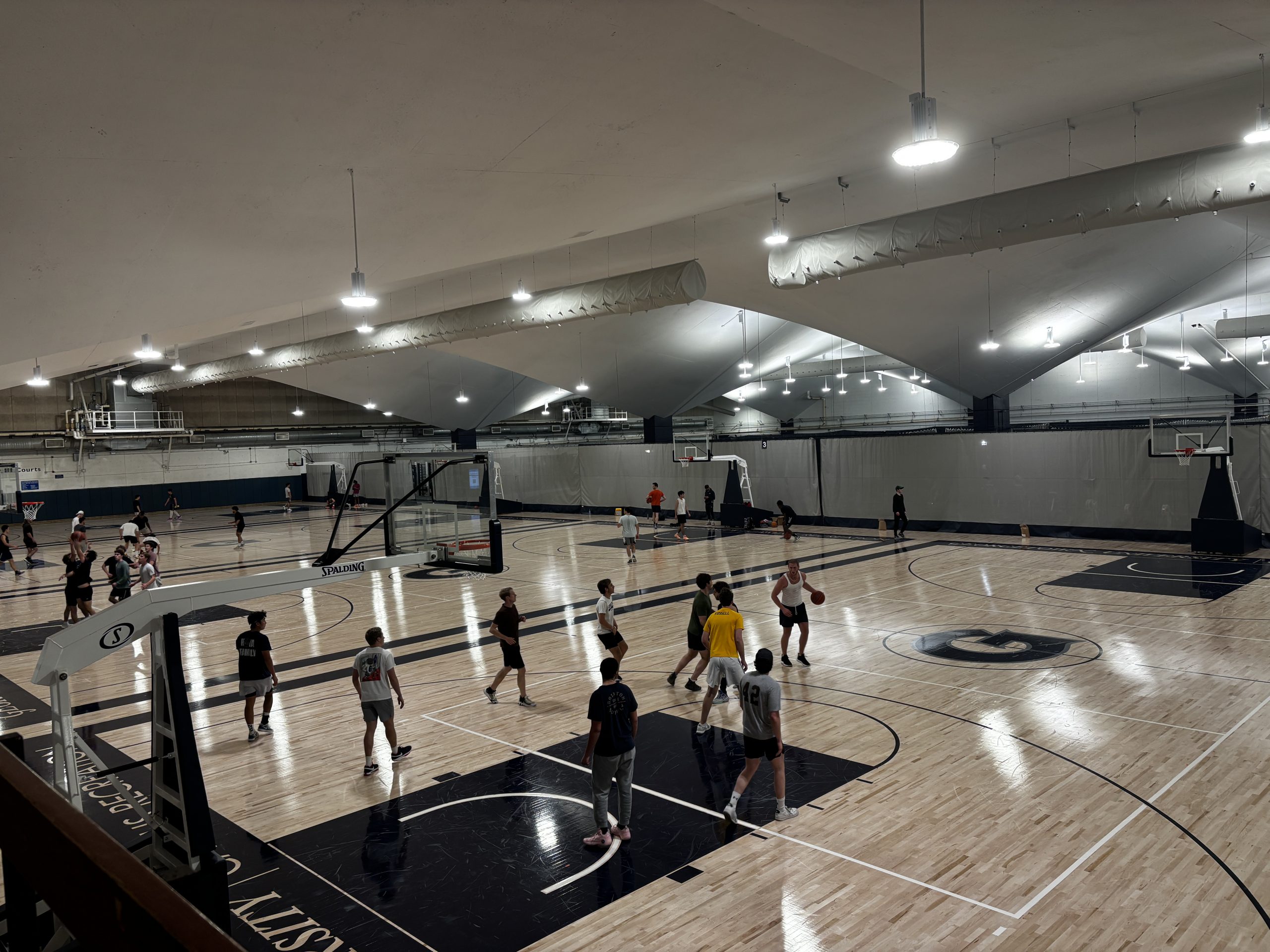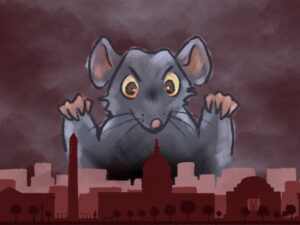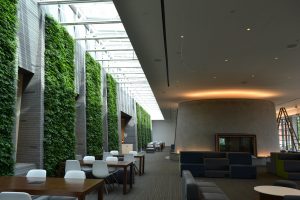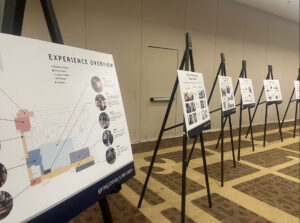The Yates basketball courts are more than just some wood, varnish, and a few basketball hoops—to many students, they’re a vital space on campus for building community. The recent renovation of the courts took over a semester to complete. While Campus Recreation and student organizations made some accommodations for students during this time, the extended closure revealed the influence the basketball courts have on student fitness, social lives, and jobs.
Campus Recreation announced in July 2024 that the courts would close for six to eight weeks of renovation. However, the courts only reopened for basketball on Tuesday, Feb. 4, six months after the original closure.
Pickleball, volleyball, and badminton play will resume within a few weeks after the installation of holes for nets.
According to a September message to students from Campus Recreation, unexpected damage to the courts explained the renovation delays. Campus Recreation said they had found water damage and mercury that, while non-hazardous, would violate the Environmental Protection Agency’s standards.
During these months of construction, students, clubs, and leagues had to shift their practice schedules. In an effort to compensate for the lack of court play, Campus Recreation provided “repurposed spaces” within Yates Field House for some programs.
“We have also implemented measures like opening temporary basketball hoops on a tennis court and extending fall intramural programs to ensure that students remain engaged and have alternative options during the renovation period,” a Georgetown University spokesperson wrote to the Voice.
Other alternative spaces included Studio A, where pickleball nets are available during select times, and an outdoor basketball court on Kehoe Field.
The renovation also increased capacity by adding two additional volleyball courts to the existing two, as well as four interchangeable basketball and pickleball courts, according to Susan Sell, executive director of Campus Recreation.
“This expanded space will allow for larger events, more open recreational play, and greater opportunities for student engagement in various sports,” Sell wrote in an email to the Voice.
In the meantime, students involved in club sports adapted to the court closures.
Colin McKenna (MSB ’25), president of men’s club basketball, said that the Advisory Board for Club Sports provided alternative spaces for men’s and women’s club basketball, giving them a shared practice slot in McDonough Arena twice a week.
“The club sports advisors have been working hard to get us some time,” McKenna said. “We’re splitting with the women’s team, but we’ll take what we can get.”
While the accommodations helped students in organized sports, for students who play pickup games, the renovation created social challenges.
“It’s a key community to a lot of Georgetown students, you know, playing pickup games, meeting people through basketball,” Jack Higgins (CAS ’27) said. “I just don’t see those people anymore, or the friends that I do play with, we don’t really hang out as much because basketball was our thing.”
Intramural (IM) leagues also struggled to keep up practices with the extensions of the renovation. Intramural Sports at Georgetown employs a staff of more than 50 student workers and supervisors, many of whom are student athletes. Traditional on- and off-campus jobs often conflict with practice schedules and frequent travel, but jobs through Campus Recreation provide these students with income and more flexibility.
“It’s really frustrating that the courts have taken this long to reopen,” Caroline Sewell (CAS ’27), an intramural referee and student athlete, said.
Renovation of the courts pushed back major IM league seasons for basketball, volleyball, and badminton. Sewell, an intramural referee and student-athlete, explained how the changes affect students’ access to work.
“Basketball is our biggest intramural offering with the most participants,” Sewell said. “We were offering less sports, and so therefore we had less hours to be able to give staff, which has been frustrating on my end.”
Sewell explained that the court closure also reduced the number of students IM was able to hire during the fall semester, as only outdoor sports were available.
When asked about how the court closures affected student employment, a university spokesperson said that Campus Recreation makes staffing decisions “based on the needs of its programs.”
During renovations, while Campus Recreation sent weekly updates to club and intramural sports in addition to online updates to the active construction website, communication from the university frustrated many impacted students who felt that the updates lacked clarity.
“The term limits kept getting pushed back, and there was not a lot of clarity on that,” Sewell said. “I wasn’t even told that basketball was being pushed back again. I found out through the campus-wide email.”
According to McKenna, there were information gaps between the university, the Club Sports Advisory Board, and the men’s club basketball team.
“With all the delays, it’s really hard to take what they say at face value,” McKenna said.
Nevertheless, McKenna is looking forward to the courts reopening, especially so the team can hold their tryouts within the next few weeks.
Intramural leagues are excited to return to full programming this spring, offering basketball, pickleball, and table tennis.
“It just feels really good to get back out there,” Higgins said. “The first day it opened back up my friends and I immediately played for 2 hours straight. It was a lot of fun—finally I can dunk again.”





